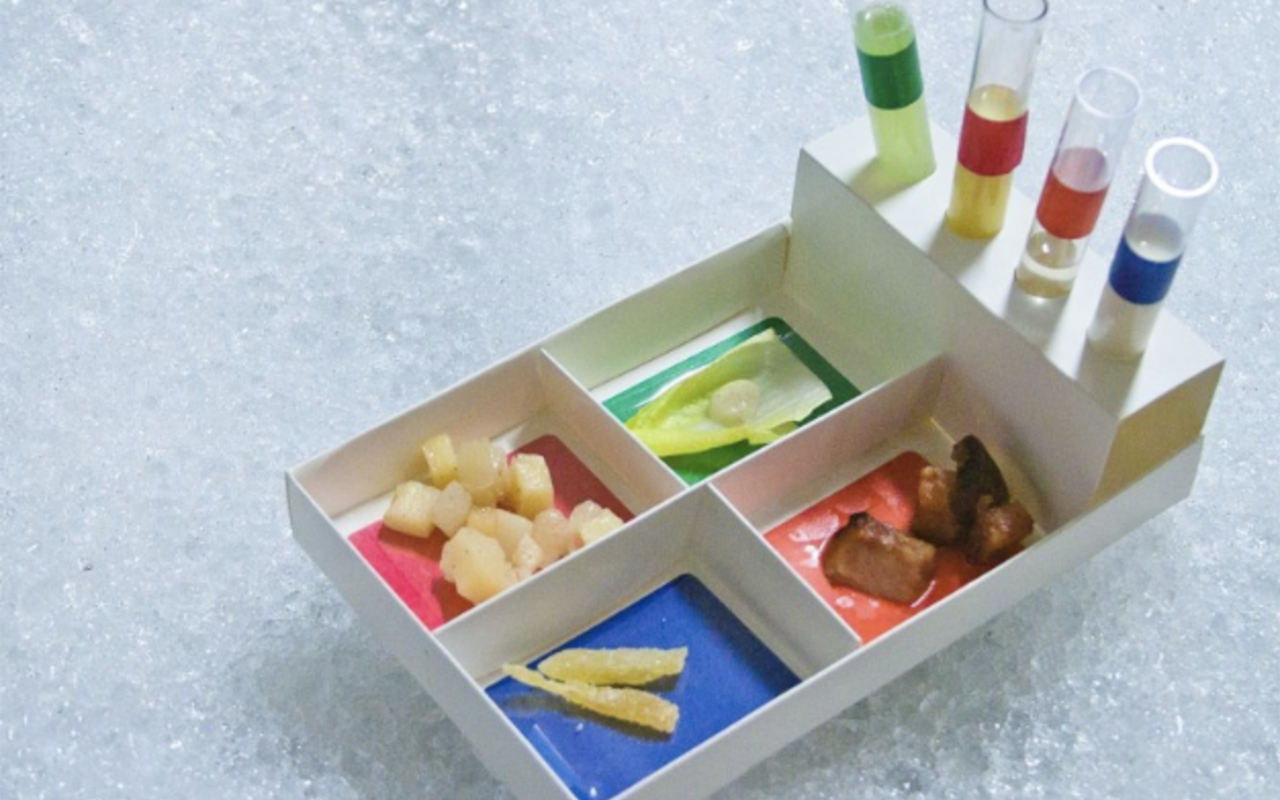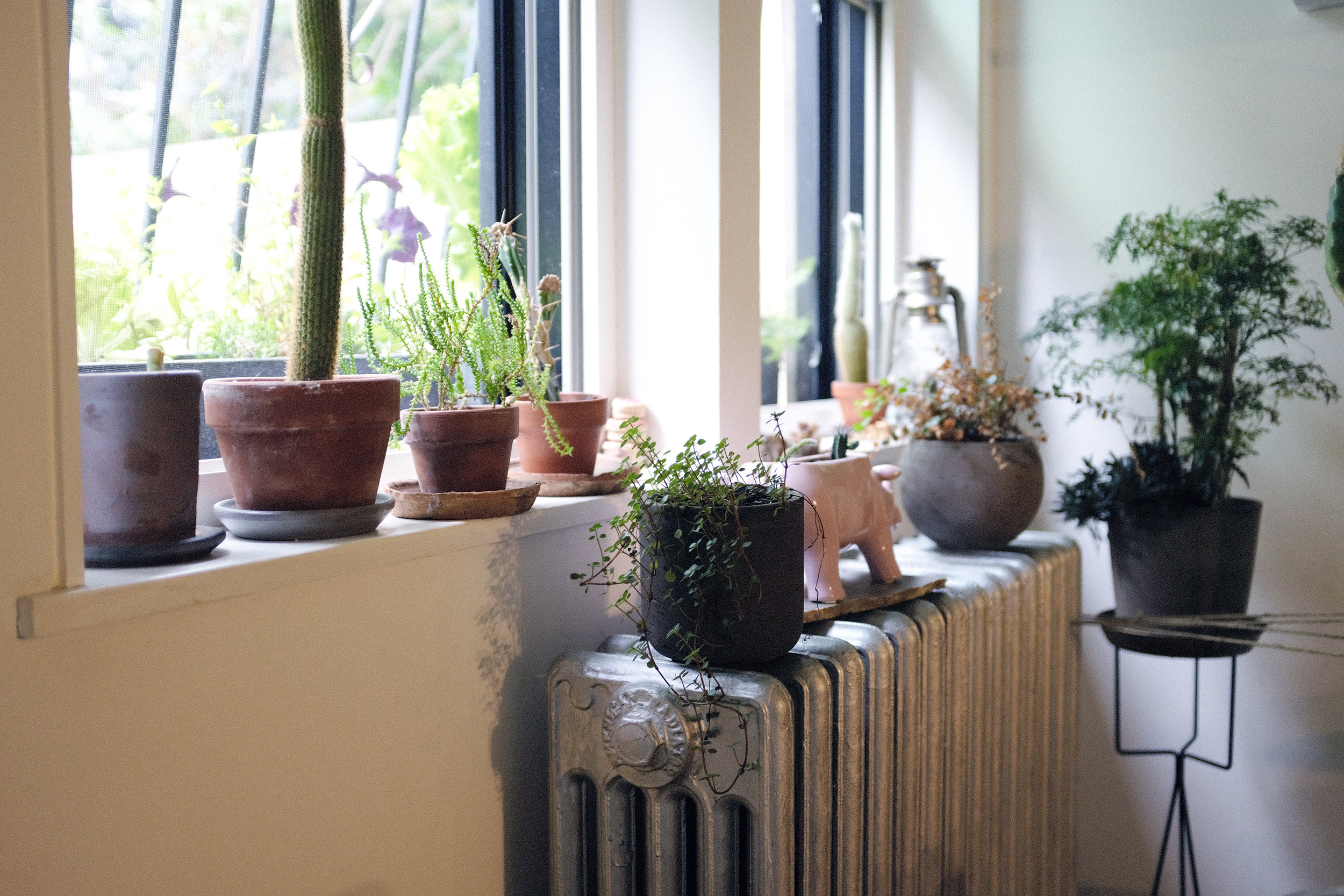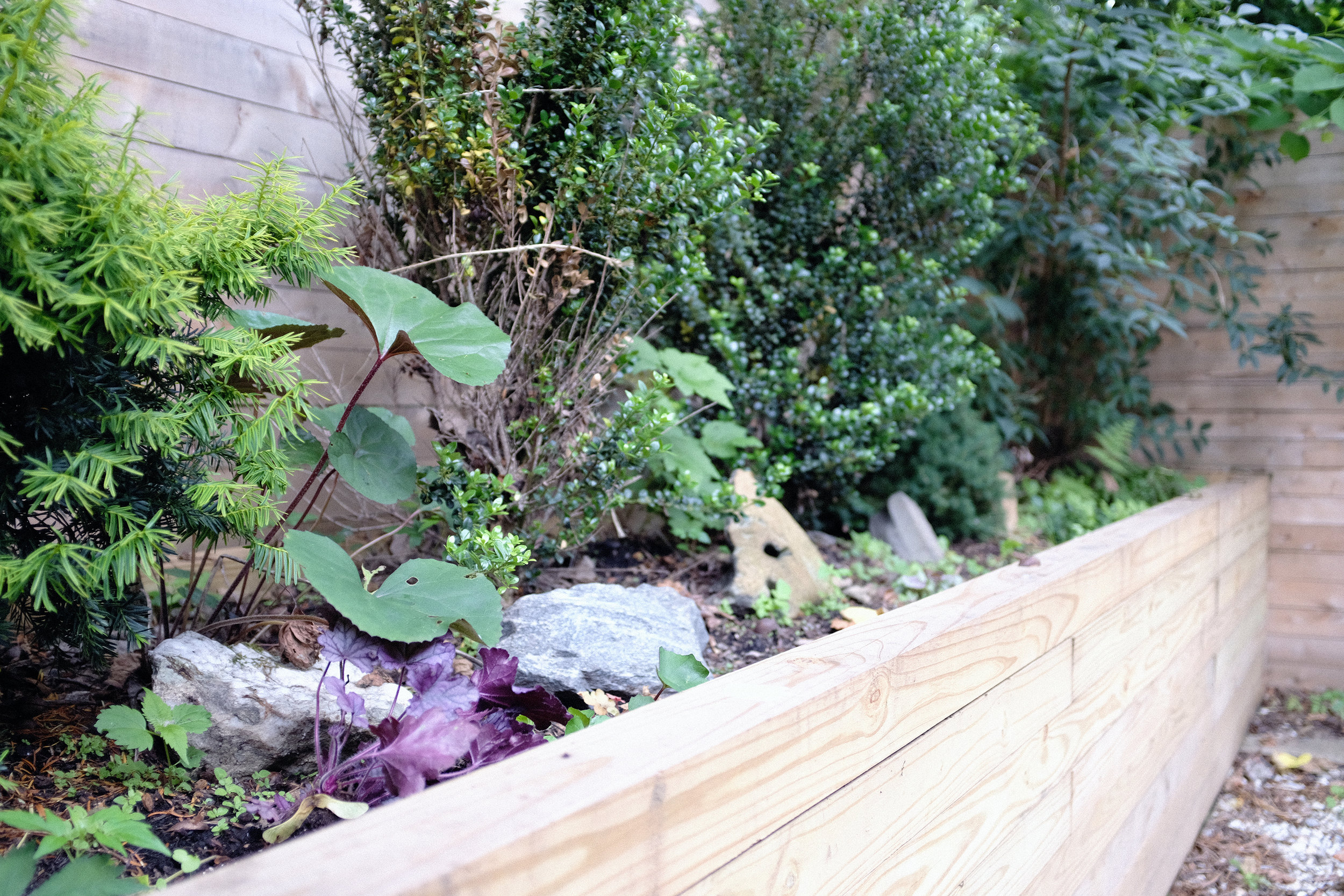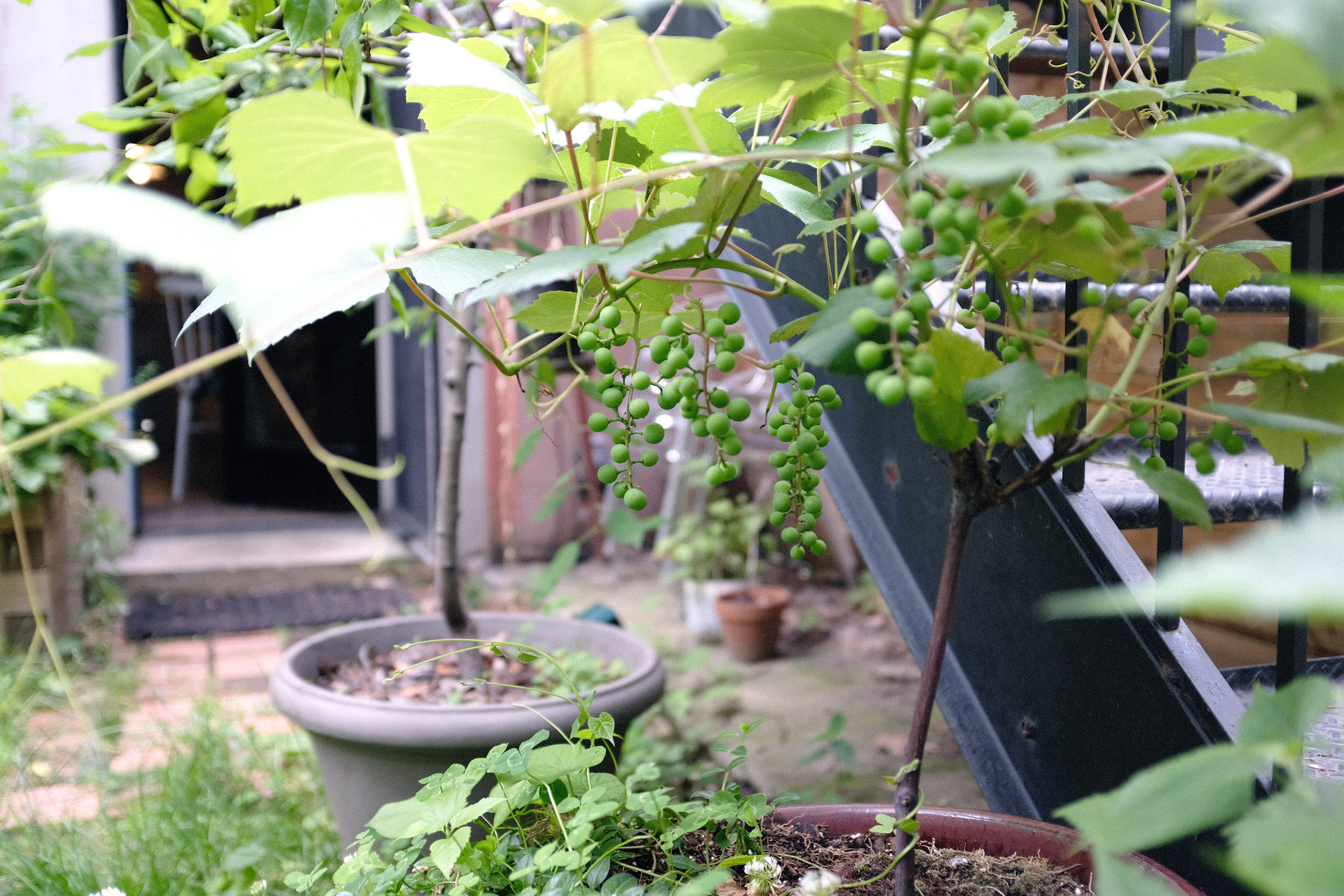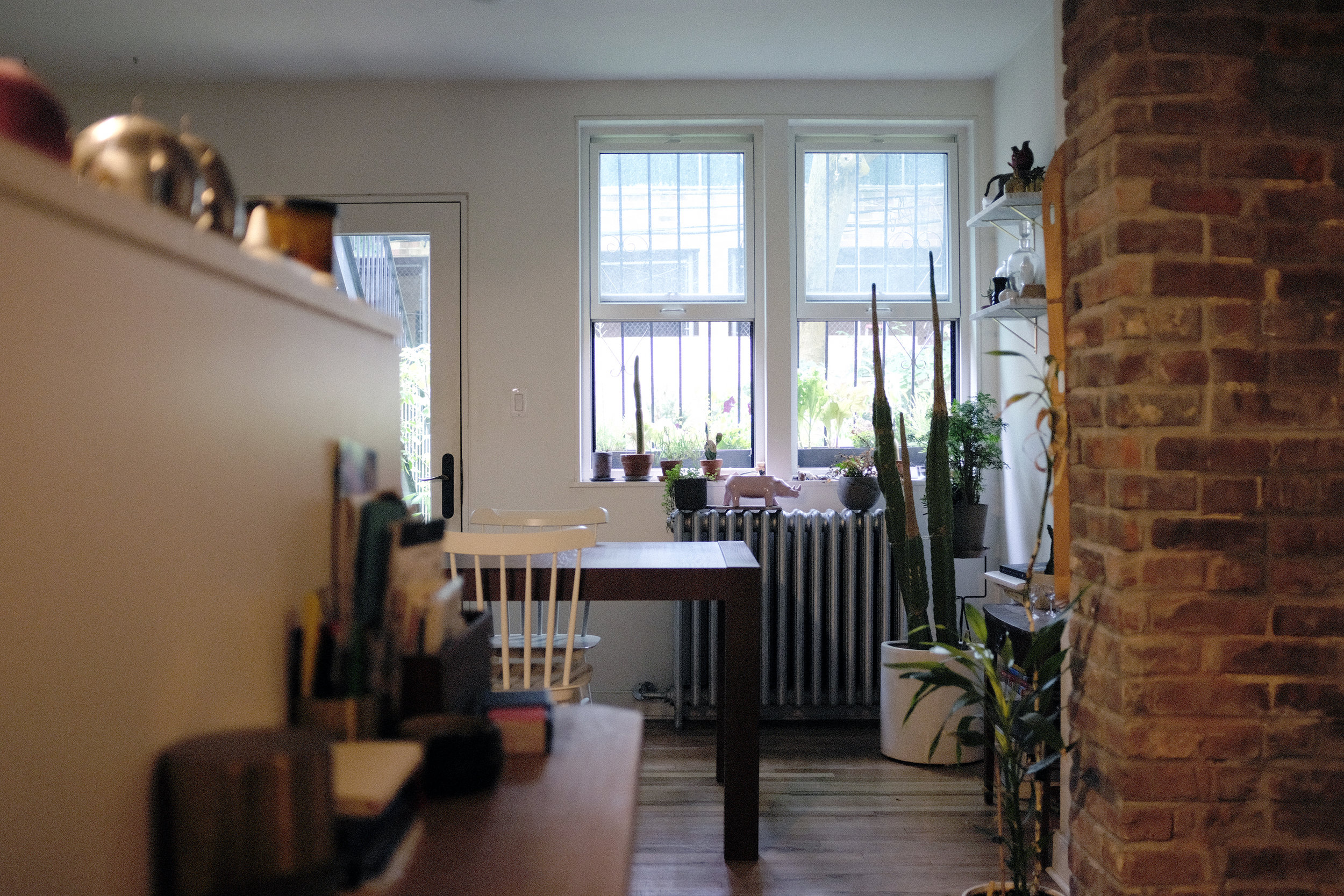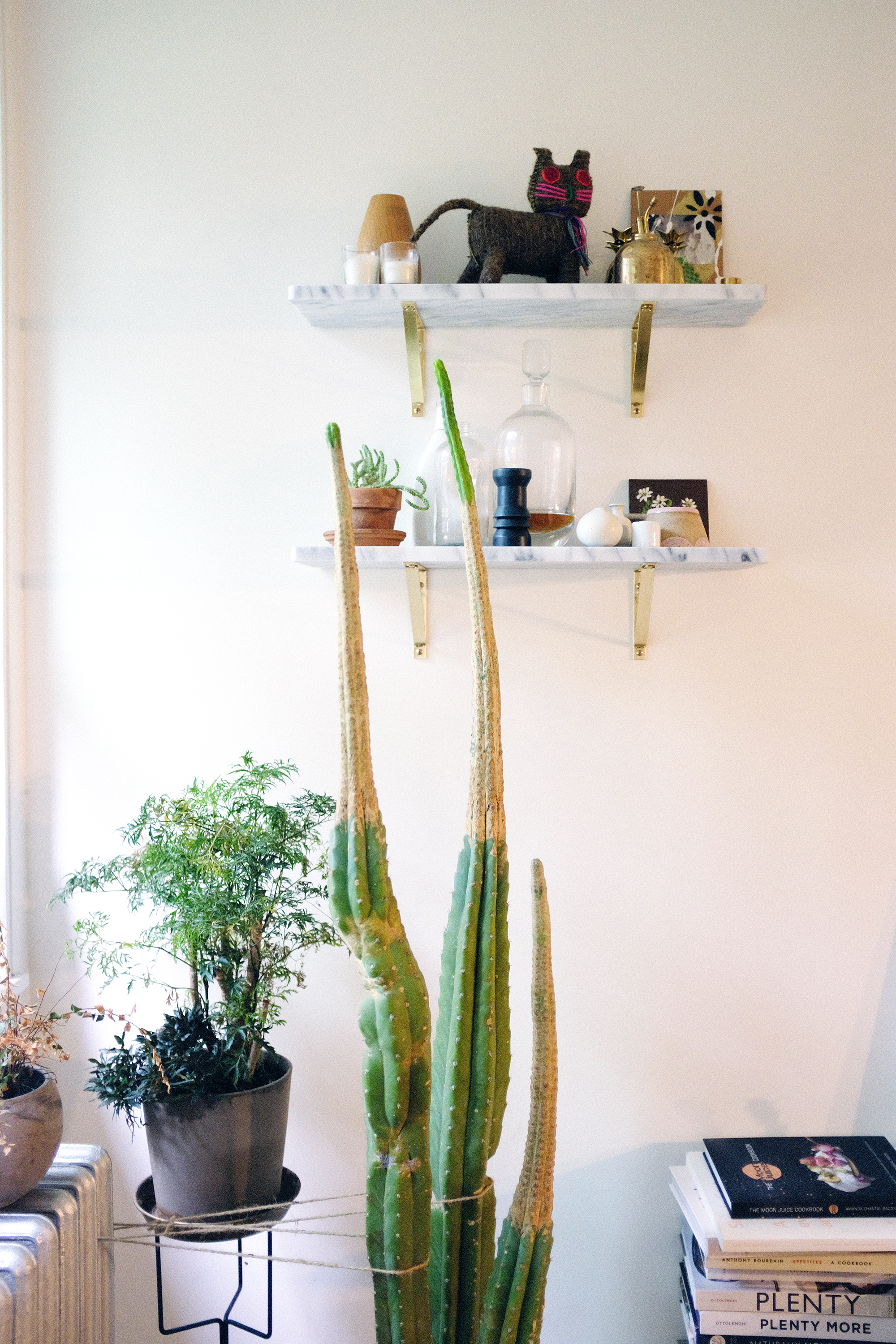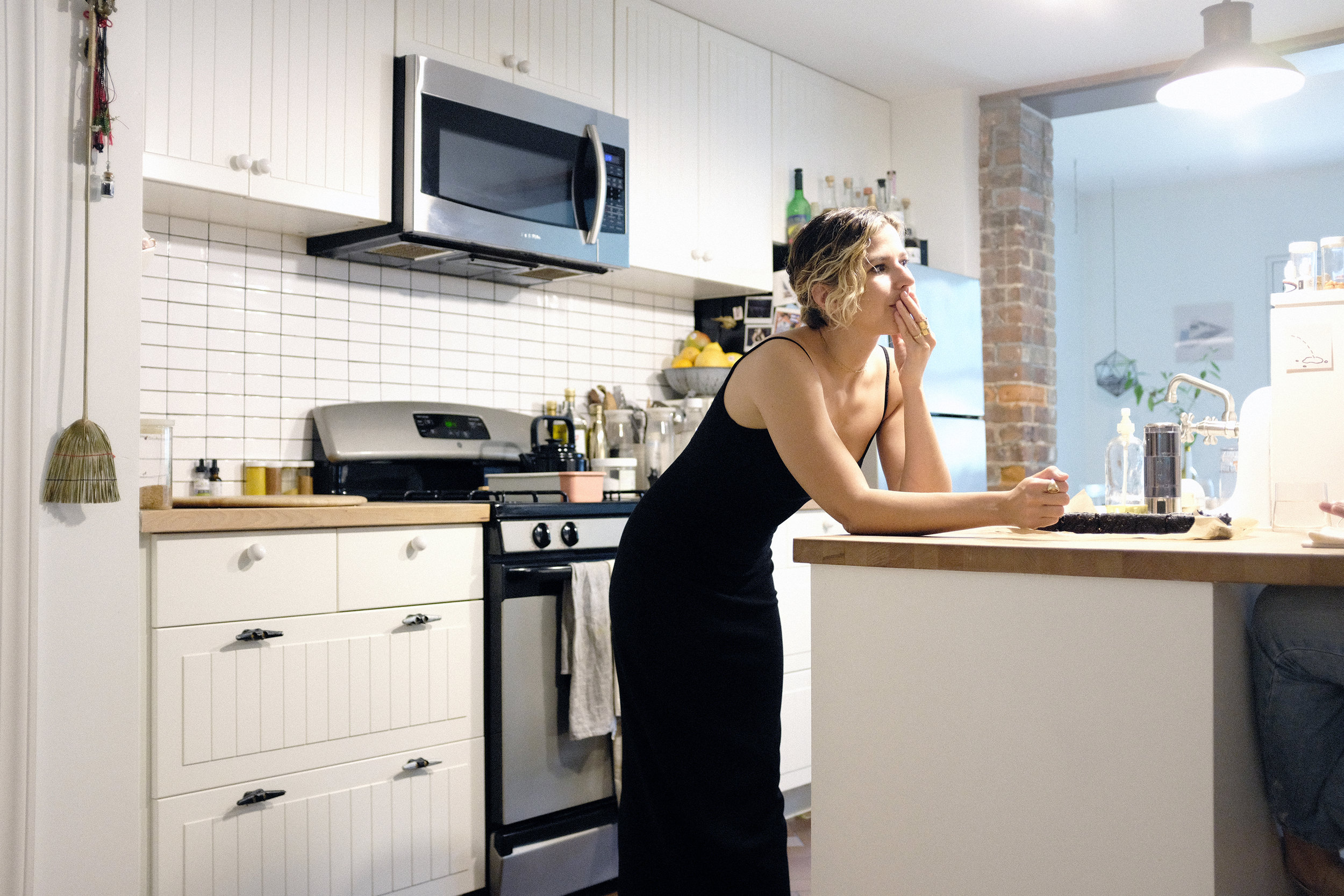1 Aug 2018
bedstuy, New York City
The taste of dreams.
Designer, writer and industry disruptor Mariela Alvarez reveals the secrets behind her drive to always do better and always do more.
"Dinner time was that closing moment of the day, in which you share stories alongside a meal crafted with love. The act of sharing was very important to my family, and because of that, I've always celebrated it."
mariela alvarez
Mariela is an architectural designer, writer, teacher and entrepreneur. She is interested in food, space, and design, and combines those to encourage people to gather, enjoy, and cook more often. Mariela is currently a Senior Project Manager at ICRAVE, where she has worked on projects through every phase of design, from concept to construction. She recently completed Le District, a large scale market in downtown Manhattan, and has been designing a holistic experience that blends architecture, interior design, and branding for this space. She is also the founder at Tasty Plan, a plant-based recipes website on a mission to get more vegetables on people’s plates. In 2017, Mariela published Coseena, a limited edition cookbook on unique and unabashedly cross-cultural recipes that make eating vegetables exciting.
Mariela holds a B. Arch from Cornell University and a post professional M. Arch from Harvard University, and has taught architectural design at Cornell, Harvard, and Columbia Universities.
Mariela, tell us a bit about yourself and how you got interested in food and architecture?
I was born in Puerto Rico to a Cuban father and a Puerto Rican mother. When my sister and I were kids, we spent a lot of time in the kitchen entertaining ourselves. As I grew older, helping my mom prepare dinner became a daily ritual. Dinner time was that closing moment of the day, in which you share stories alongside a meal crafted with love. The act of sharing was very important to my family, and because of that, I've always celebrated it.
While studying architecture at Cornell University and inspired by my childhood curiosities, I took a lot of elective courses on food anthropology, including an Intro to Culinary Arts during my last semester. I became obsessed with the notion of sharing food, not only as an act of eating, but also as a process deeply embedded in the intricacies of culture, community, infrastructure and city planning. I started throwing epic dinner parties for my friends. People could not believe I bought and prepared shark steaks for 30 people in a tiny 500 square foot apartment. Entertaining, mixing culture and having food around the table has always been something I've loved doing. Feeding people gives me so many fulfillments – it is the ultimate instant gratification both for me and whomever I am feeding.
To further pursue my interest in mixing food with architecture, a few colleagues and I joined forces and formed Project on Spatial Sciences while at Harvard University. For our first event - Three States of Hors D'Oeuvres - we teamed up with David Edwards, a scientist and food enthusiast who at the time was doing a lot of cool experiments with food, art, and technology. This was the age of molecular gastronomy and David had this machine that would turn liquid into a beautiful thick cloud. We thought this was extremely architectural in the way one could turn food into space. We took this technology and designed an immersive four course meal around it. More than 1,000 people showed up that night – we were floored.
Three States of Hors D'Oeuvres, Harvard University
What about your subsequently transition into the world of hospitality design, and how has that experience influenced you as a person?
Due to my long standing interest in food, I always knew I wanted to design restaurants after grad school. I serendipitously found ICRAVE and have been a part of the team for a little over six years. My time there has exposed me to the possibilities beyond the conventional scope of design, where designers can also actively participate in the process of launching businesses and curating identities. I dug into all the intricacies that go on behind the scenes, and learnt what it takes to turn a vision into successful business models. In a way, ICRAVE spiked my interest beyond design and helped me grow into who I am today.
I also run a food blog called Tasty Plan. Every weekend, I play with the ingredients I find at the farmer's market to develop my own recipes and photograph the whole process. The blog has been live for a little over eight years now, and has been my main creative outlet.
Last year, I decided it was time to take it to the next level, and wrote my first cookbook-meets-guidebook titled Coseena. Publishing Coseena was exciting, but very tough. I would go home after work every day and dedicate an additional few hours to develop recipes, edit copy, and fine-tune all the photographs. I have to remind myself of this accomplishment all the time. I still cannot believe I actually did it.
"I became obsessed with the notion of sharing food, not only as an act of eating, but also as a process deeply embedded in the intricacies of culture, community, infrastructure and city planning."
"To a certain degree, the recipes I develop on my blog are a trace of my personal relationship and struggles with food over time."
View into Mariela's backyard garden from her living room
Coseena, a cookbook-meets-guidebook published by Mariela in 2017
It is incredible how you managed to accomplish so much all on top of your work load at ICRAVE. Is it your passion for food, or is it your curiosity for the future that propels you forward?
It is a combination of never being satisfied with where I am and always wanting to be better at what I do. I think this mentality is rooted from my health problems, and my desire to get better has always been channeled through everything I do. Not many people know this, but I was diagnosed with Hashimoto's Thyroiditis, a form of hypothyroidism when I was 12. Growing up, my relationship to food was very complicated - it had been something I loved, but it had also been the source of my problems. My food allergies evolved with time and I became a celiac as I grew older. The conditions of my struggle with food are constantly changing and I have to keep adjusting myself to feel better. To a certain degree, the recipes I develop on my blog are a trace of my personal relationship and struggles with food over time.
Having said that, I think part of my drive also comes from the rush that I get from being able to bring joy and excitement to other’s life. About a year and a half ago, we organized an event at the rooftop of Gotham Greens, with the idea of bringing the restaurant to the farm and the farm to the city. We had a few prominent chefs onboard, including Jamie Young from Sunday In Brooklyn and Franklin Becker from Top Chef Masters. The third chef had to drop out the week of. Since I was producing the event, I knew I had to step in. To be completely honest, I had doubts in my own ability at the time, but with a little encouragements from my coworkers, I accepted the challenge and jumped in, putting together a meal for a hundred people within a week’s notice. I was up at three in the morning every night leading to the event while still going to work during the day. I have never felt so alive in my life. It shook me from within and inspired me to think hard about what the next stage in my life and career would be.
A video of the event can be viewed here.
"Not many people know this, but I was diagnosed with Hashimoto's Thyroiditis, a form of hypothyroidism when I was 12. Growing up, my relationship to food was very complicated - it had been something I loved, but it had also been the source of my problems."
"I think part of my drive also comes from the rush that I get from being able to bring joy and excitement to other’s life."
Tell us a little bit about your newest venture, Bar Bruja.
Last October, my husband and I went to Japan for our friend’s wedding and came back obsessed with both the culture and the food. In Japan, people hone their skill to perfection unlike any other culture I’ve been lucky enough to cross paths with. In Tokyo, restaurants wouldn’t worry about pleasing everybody. Instead, they would serve only one type of cuisine and craft it to perfection. To me, this was a north star, a pure manifestation of confidence and craftsmanship – everything I’ve ever aspired to embody.
A few months ago, I was walking down the street – a block away from my house - and saw an empty space. I thought to myself, “wouldn’t it be awesome if I did this Japanese inspired beverage concept, except for it was Latin American and we would only serve the best coffee this neighborhood has ever tasted in the morning and really good Mezcal cocktails at night?”. Bar Bruja was born.
The name means Witch Bar in Spanish, a word play on the notion that everything we serve is “super natural” and will make you feel “magical”. The menu is hyper focused – new and classic Latin American snacks made with ingredients that are really good for you. I love the idea of being super focused on something and executing it really well. I also like the idea of eating well, not because it is good for you but because it makes you feel good. I love telling people that feeling good is the new looking good.
Bar Bruja is part of my larger vision for Seetyo, a hospitality venture studio. Our mission is to build and scale trend setting concepts from the ground up through permanent capital funding. I love design and I would never give that up, but I also love food and coming up with new dining concepts. Seetyo vertically integrates brand, space and food design, streamlining the process of launching F&B businesses. I currently have multiple projects on deck, and our goal is that none of them operate independently, but rather as part of an ecosystem. Having a fund with diversified concepts reduces risk and gives us wiggle room to play and experiment with the market demands.
"In Japan, people hone their skill to perfection unlike any other culture I’ve been lucky enough to cross paths with. In Tokyo, restaurants wouldn’t worry about pleasing everybody. Instead, they would serve only one type of cuisine and craft it to perfection. To me, this was a north star, a pure manifestation of confidence and craftsmanship – everything I’ve ever aspired to embody."
"I also like the idea of eating well, not because it is good for you but because it makes you feel good. I love telling people that feeling good is the new looking good."
Why Mezcal of all liquors out there?
Mezcal is a mystical spirit; I mean, it is harvested based on moon cycles! Unlike many other spirits, Mezcal is still being produced by generations-old farms in Oaxaca, Mexico. Unlike tequila, or any other imbibing beverage for that matter, every single Mezcal varietal has its own personality- some are more aromatic, and others smokier. It is fun to drink and won’t leave you feeling gross afterwards.
What excites you most about the opportunities and possibilities of Bar Bruja, and the larger concept of Seetyo?
I truly believe that we have become much more discerning consumers. We went through a trend of limitless customization and are now ready for better dining experiences where quality is guaranteed. My vision for Bar Bruja is exactly that – during the morning we will serve good coffee and perhaps two or three pastries with options for sweet or savory. As the day progresses into the night, the menu switches to a few crafted Mezcal cocktails and a small selection of really good bar snacks. Having a focused menu forces you to make these limited items really, really well – something that will spike your interest and keep you coming back.
While the idea of all-day beverage driven concept is not new, I cannot think of anyone that has managed to pull it off successfully. Coffee shops lose profits at night and bars tend to have little customers during the day. The closest working models are the neighborhood bistros of Paris and the cafés of Rome, or the bodegas of Barcelona. The challenge of making these two typologies work for our culture is an interesting problem to solve for.
What is the biggest challenge ahead of you, and do you have any advice to anymore who is also thinking about starting their own ventures?
I was at an event hosted by Bon Appetit magazine where a group of entrepreneurs reiterated that the key to success is determined by how quickly one can get back on the horse after you have fallen. As an entrepreneur, you are bound to fail over and over again, and you have to be able to dust yourself off and move on. It is important to stay focused and know what your mission is. Finding out “why am I doing this?” will answer all questions, settle all insecurities, and help you navigate all the problems that will inevitably arise. Your mission will change over time, but having one at all times is key. This is something we always tell our clients at ICRAVE, and this is something I remind myself every day.
"As an entrepreneur, you are bound to fail over and over again, and you have to be able to dust yourself off and move on."
Mariela working in her kitchen
A big thank you to Mariela for sharing with us her vision for the future of hospitality and design. For more information on Tasty Plan, please visit her website here.
To learn more about Mariela's event Three States of Hors D'oeurves, click here.
If you would like to read more stories about other designers and creatives at the forefront of their industry, visit our conversations page for monthly updates.
Text edited by Katie Kasabalis and Darius Woo
Photography and layout by Darius Woo





